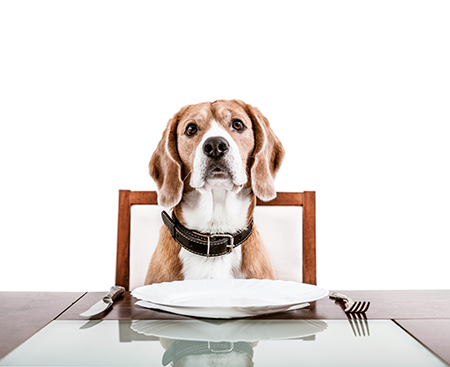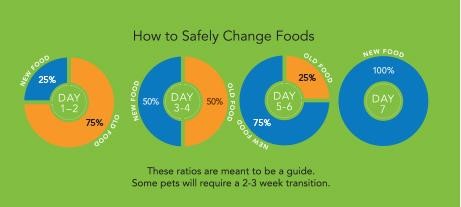Many pet owners believe they should feed their dogs and cats the same food without variety throughout their lives. So you may be surprised to learn that food variety and regular rotation are actually good for your pet’s health!
The truth is, the idea that pets should eat the same food all the time is a myth that originated in the pet food industry. Of course, every pet food company wants you to commit to their product, without switching to another brand.
This myth has been supported by the fact that pets sometimes have a negative reaction when introduced to a new type of food. But this usually occurs when they have been forced to eat a single source of food for an extended time and are transitioned to a new food very abruptly.
Digestive systems that have been trained to process a single type of diet for a prolonged period of time are sensitive to changes. But if you are able to transition your pet’s food gradually, you can avoid illness, stress, and aversion to the new diet.
At CityVet, we strongly believe that rotation is nature’s way of ensuring a complete and balanced diet. Therefore, it’s best to feed your pet a variety of healthy dry foods, wet foods, and fresh raw foods when possible.

Changing up your pet’s food can be tricky and require some trial and error, but it’s well worth the health and wellness benefits for your pet. Below are some common questions and answers about transitioning your pet’s food.
How do I transition my pet to a new food?
While some pets may be more sensitive to food adjustments than others, in general, we recommend transitioning your pet’s food on a one-week schedule.

Keep in mind that these ratios are only a guide and that some pets will require a longer 2-3 week food transition schedule. If you notice adverse side effects while transitioning your pet’s food, experiment with a more gradual pace.
When is an ideal time to transition my pet’s food?
Food transitions are ideal when the pet is at home in familiar surroundings. Avoid beginning a transition while traveling, when someone else is caring for your pet, or during the holidays and other high-stress, high-foot traffic times in your home.
What if my pet just won’t adjust to the new diet?
For some pets, a more gradual 2-3 week transition schedule may be necessary. Don’t give up right away! You may just need to experiment with different flavors or brands until you find what works your pet.
Additionally, you can rest assured that CityVet will accept your opened bag of dog or cat food for a full return or exchange if the new food is simply not working out.
What if my veterinarian recommends prescription pet food?
You should always consult with your veterinarian on the best way to transition to a prescription food, as this will vary depending on your pet’s unique needs.
My pet is having negative side effects on their new diet. What should I do?
In some cases, undesirable symptoms such as stomach upset, flatulence, loose stool, vomiting, diarrhea, and decreased appetite will occur as a result of introducing a new food. These symptoms are common in pets that are not used to variety in their diets.
Keep in mind that variety is natural and healthy! If you encounter these symptoms when transitioning your pet’s food, try slowing down the transition process. You may also add a digestive aid and/or anti-diarrheal supplement, or consult with your veterinarian.
We recommend following these steps for dealing with minor symptoms:
If symptoms persist or become severe, especially if your pet stops eating, we recommend that you stop the transition immediately and schedule an appointment with your veterinarian. Prescription medications may be used to treat severe symptoms. In some cases, a pet may need to remain on a limited diet because of a medical condition or allergies.
Rest assured that in time, most pets will eventually adjust to the transition process and thrive on a diet that consists of dry, wet, and raw foods rotated appropriately.
Still, have questions about transitioning your pet’s food? Don’t hesitate to contact CityVet for more information!